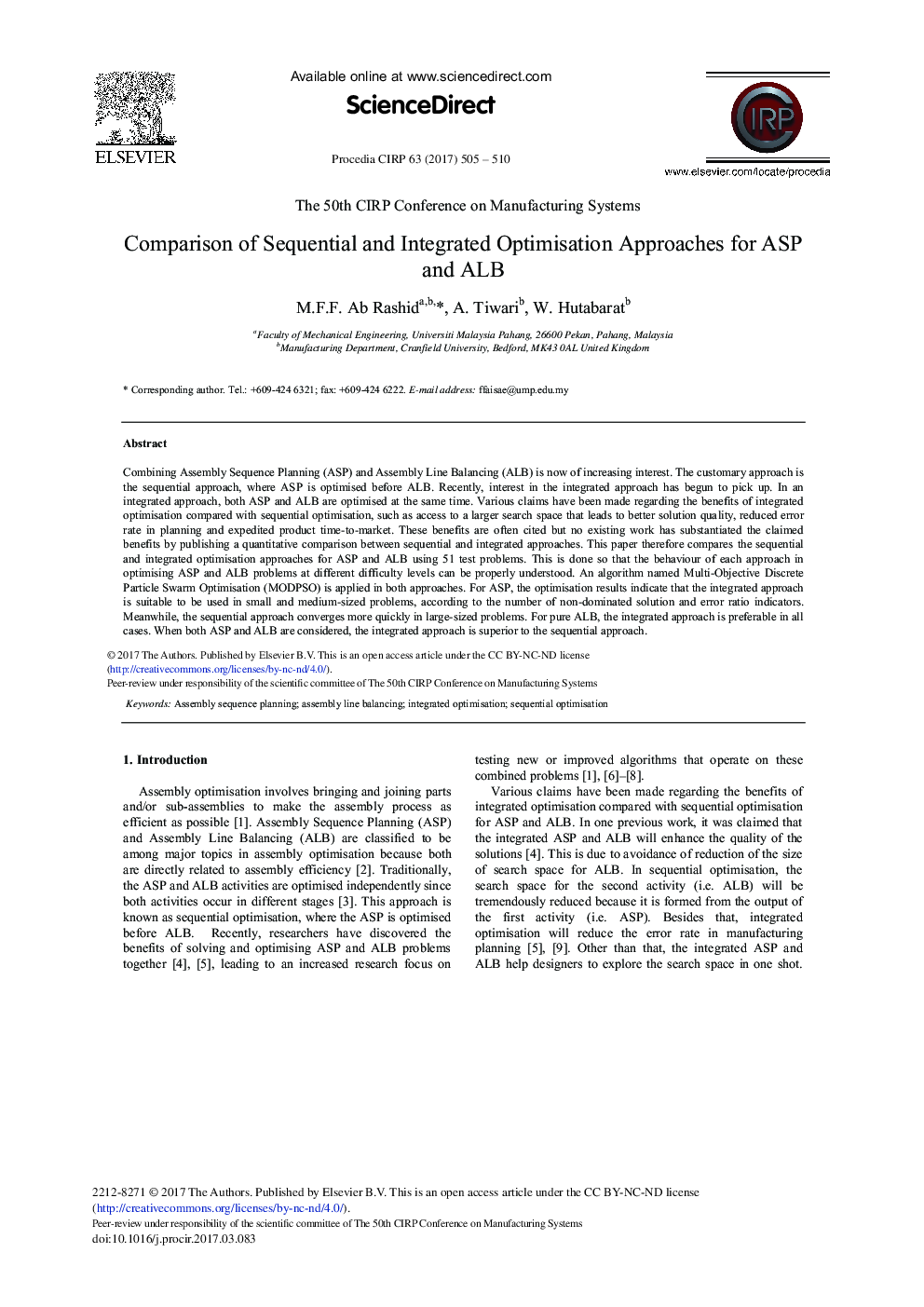| Article ID | Journal | Published Year | Pages | File Type |
|---|---|---|---|---|
| 5470202 | Procedia CIRP | 2017 | 6 Pages |
Abstract
Combining Assembly Sequence Planning (ASP) and Assembly Line Balancing (ALB) is now of increasing interest. The customary approach is the sequential approach, where ASP is optimised before ALB. Recently, interest in the integrated approach has begun to pick up. In an integrated approach, both ASP and ALB are optimised at the same time. Various claims have been made regarding the benefits of integrated optimisation compared with sequential optimisation, such as access to a larger search space that leads to better solution quality, reduced error rate in planning and expedited product time-to-market. These benefits are often cited but no existing work has substantiated the claimed benefits by publishing a quantitative comparison between sequential and integrated approaches. This paper therefore compares the sequential and integrated optimisation approaches for ASP and ALB using 51 test problems. This is done so that the behaviour of each approach in optimising ASP and ALB problems at different difficulty levels can be properly understood. An algorithm named Multi-Objective Discrete Particle Swarm Optimisation (MODPSO) is applied in both approaches. For ASP, the optimisation results indicate that the integrated approach is suitable to be used in small and medium-sized problems, according to the number of non-dominated solution and error ratio indicators. Meanwhile, the sequential approach converges more quickly in large-sized problems. For pure ALB, the integrated approach is preferable in all cases. When both ASP and ALB are considered, the integrated approach is superior to the sequential approach.
Related Topics
Physical Sciences and Engineering
Engineering
Industrial and Manufacturing Engineering
Authors
M.F.F. Ab Rashid, A. Tiwari, W. Hutabarat,
